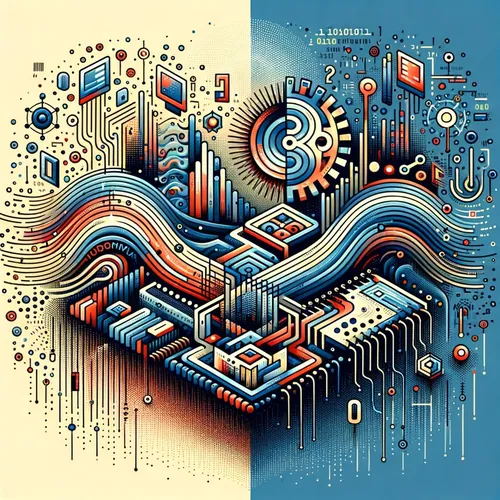Quantum Leap: IonQs Diamond Breakthrough Propels Scalable Qubit Fabrication
- Author
- Quiet. Please
- Published
- Sun 07 Sep 2025
- Episode Link
- https://www.spreaker.com/episode/quantum-leap-ionqs-diamond-breakthrough-propels-scalable-qubit-fabrication--67663768
This is your Quantum Tech Updates podcast.
Today, the air in our quantum labs feels charged—not just with photons and electromagnetic fields, but with the sort of anticipation you’d feel on the eve of a scientific revolution. This week, IonQ announced a breakthrough that may fundamentally alter the way we build quantum computers: the industrial-scale fabrication of quantum-grade synthetic diamond films. Now, if you’re picturing moon-sized diamonds powering servers—dial it back a notch. The true drama plays out on a scale invisible to the eye, etched onto silicon wafers inside humming cleanrooms at College Park and Oxford.
Let’s pause and translate the milestone for the non-physicists in the audience. To date, quantum hardware development has been stymied by the painstaking, boutique-level craftsmanship required to make quantum-grade diamonds. Imagine qubits—the quantum version of bits, but with the uncanny ability to store information as both zero and one simultaneously—were glass figurines, uniquely delicate, each carved by hand. IonQ, partnering with Element Six, just unveiled a process for mass-producing these ‘figurines’ with the consistency and scalability of smartphone chips. That’s the quantum equivalent of moving from hand-painted masterpieces to industrial inkjet prints: the artistry remains, but suddenly you can produce millions, rapidly and reliably.
Why do diamonds matter here? Their atomic structure is near-perfect, their defects controllable—meaning they can host quantum memories and photonic interconnects that let quantum computers link, sync, and talk to each other at blinding speeds. Like the circuits in your laptop, but capable of rising to challenges even the world’s leading supercomputers choke on. It’s as if we’re no longer trying to build a cathedral using medieval blueprints and hand tools—now we have factory-grade scaffolding, laser levels, and precision robots[3].
Niccolo de Masi, IonQ’s CEO, describes this as making quantum “foundry compatible”—a phrase rippling through the semiconductor world much like “GPU acceleration” did two decades ago. It’s not just about going faster. It’s about the opportunity to combine quantum and classical components into hybrid chipsets, ready to slot into everything from national defense networks to global cloud infrastructure. Picture a city’s electrical grid suddenly upgraded so every home can access the latest next-generation energy source without swapping out their wires. That’s the promise these diamond films unlock.
The momentum isn’t isolated. Just this week, Quantinuum raised $600 million at a $10 billion valuation, signaling corporate faith that scalable quantum hardware is on the verge of transforming cybersecurity, logistics, and even material science. Meanwhile, New Mexico inked a partnership with DARPA, aiming to verify if utility-scale quantum computing will be reality by 2033—a sign that the race isn’t only among tech giants but across entire states and nations.
To me, every time a quantum bit flickers between states, I’m reminded of the world’s competing signals—periods of order and unpredictability, much like our rapidly shifting technological landscape. Every quantum milestone is a snapshot of potential made real.
Thank you for tuning in to Quantum Tech Updates. If you have questions, or if there are topics you’d like me to dive into on air, send an email to [email protected]. Don’t forget to subscribe, and remember, this has been a Quiet Please Production. For more information, check out quietplease.ai.
For more http://www.quietplease.ai
Get the best deals https://amzn.to/3ODvOta
